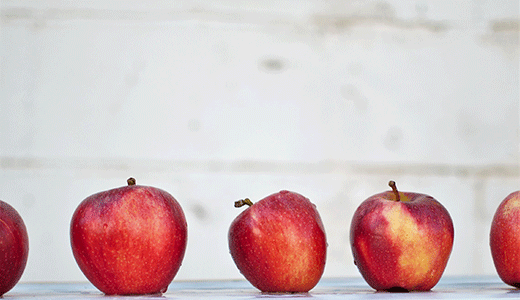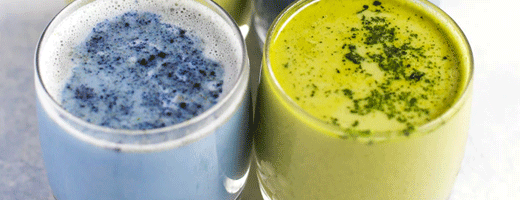Rethinking fibre – all the benefits, none of the risks?
13 May 2018 | By Jerry Zhou | 10 minute read

We’ve all heard the phrase “an apple a day keeps the doctor away” but have you thought about what exactly is in these fruits that keeps you out of the waiting room?
The latest health trends are pointing to fibre as the key to disease-free living. Apples, like many fruits and vegetables, are made of fibre - the skin is made of tough insoluble fibre and the fruit contains pulpy soluble fibre.
When eaten, these two fibres affect the body differently. Insoluble fibre remains relatively unchanged throughout the gut, bulking up stool and speeding up the passage of food and waste.
Soluble fibre, on the other hand, is more complex. Soluble fibres become a gel-like paste in your stomach, this paste is very good at absorbing sugar, fat and cholesterol from other foods so that you don’t absorb them into your blood. This is the reason why the 22 g of sugar in an apple is not absorbed as quickly as sugars in soft drink.
Further down in the gut, good bacteria will ferment soluble fibres to produce short-chain fatty acids. We are only beginning to understand the importance of short-chain fatty acids. What we know so far points to their role as the main source of energy for cells in the colon and have protective effects against obesity and colon cancer.
The same thick viscous gel that gives soluble fibre its health benefits is also the bane of anyone suffering from a gastrointestinal motility disorder. As you can imagine, having a lump of highly viscous gel in your stomach can literally grind things to a halt. Recently, the potential of low viscosity soluble fibres have come into the spotlight. Promising to be easier to digest but also retaining all the benefits.
What makes soluble fibre viscous?
Soluble fibres are made up of simple sugars joined up to form a long chain called polysaccharide. The longer the polysaccharide chain the more tangled they become when mixed together and the more viscous the fibre. Psyllium husk, primary ingredient in Metamucil, forms a thicker gel than oat bran because it’s made up to longer polysaccharide chains.
The simplest way to reduce viscosity is to have shorter polysaccharide chains. Partially hydrolysed guar gum (PHGG) is the most well-known, it is created by artificially cutting guar gum into shorter chains.
Another way to achieve low viscosity is through side-chains. Acacia gum is composed of side-chains that branch out from the main polysaccharide chain. These side-chain help maintain distance between polysaccharides and prevent tangling.
For decades these fibres have been used in food manufacturing, but it is only recently have they become commercially available to everyday consumers as health supplements.
Clinical studies
Research in the past two decades have described remarkable findings with low viscosity soluble fibres.
Blood glucose and cholesterol management
Small study of six healthy volunteers ingested 15 g of PHGG with 75 g of sugar. Compared to the water control, PHGG group had lower blood glucose levels and maintained a lower glycaemic (GI) index through out the test. Another five volunteers ingested 15 g of PHGG and ate an omelette prepared from 50 g butter and five eggs. Afterwards, their total blood cholesterol, LDL, VLDL and phospholipids were significantly low in the PHGG group compared to control.
Yamatoya et. al., 1993 Japan Society of Nutrition and Food Science, Vol. 46 pp 199-203
Soften and improved faecal output
Fifteen women with constipation were given 11 g/day of PHGG as a drink for 3 weeks. Compared to the water control, the PHGG group had increased defecation frequency, increased faecal moisture, reduced faecal pH, and increased probiotic population in their stool.
Takahashi et. al., 1994 Journal of Nutrition Science and Vitaminology, Vol. 40 (3) pp 251-259
Water and electrolyte absorption in rat models for diarrhea
Acacia gum added to glucose oral rehydration solution enhanced its effectiveness for water and electrolyte absorption in normal rats and rat models for diarrhoea. Acacia gum caused molecular changes in small intestinal villi to enhance absorption of sodium, potassium, and water.
Wapnir et. al., 2008 Digestive Diseases and Sciences, Vol. 53 pp 80-87
Shorten duration of diarrhea in children
Double-blind, randomised clinical trial of 150 children (4-18 month old) with watery diarrhea. PHGG 20g/L added to World Health Organisation Oral Rehydration Solution substantially reduced the duration of diarrhoea and modestly reduced stool output in young children with acute noncholera diarrhoea.
Alam et. al., 2000 Journal of Paediatric Gastroenterology and Nutrition, Vol 31 (5) pp 503-507
Reduced diarrhea in tube fed patients
Double-blind, randomised trial of 100 tube fed patients ingested 20 g of PHGG supplemented in their standard diet (Nutrodrip standard). Results showed a reduction in the incidences of diarrhoea, regardless of the cause of diarrhoea. There was increased hydrogen production and significantly higher rate of flatulence.
Homann et. al., 1994 Journal of Parenteral and Enteral Nutrition Vol 18 (6) pp 486-490
Improved bowel habits in irritable bowel syndrome
Randomised study compared a high fibre diet of 30 g/day of wheat bran with a smaller dosage of PHGG drink at 5 g/day in 188 adults with mild to moderate irritable bowel syndrome (IBS). Over 12-week period patients reported greater satisfaction and tolerance with PHGG than with wheat, while both fibres were able to return bowel habits to normal in patients with constipation-predominant IBS and diarrhoea-predominant IBS.
Parisi et. al., 2002 Digestive Diseases and Science, vol. 47, No. 8 pp. 1697-1704

 GP Home
GP Home


